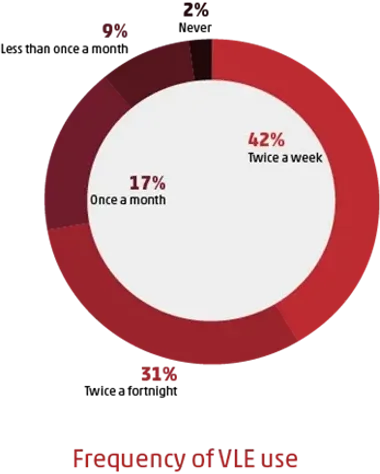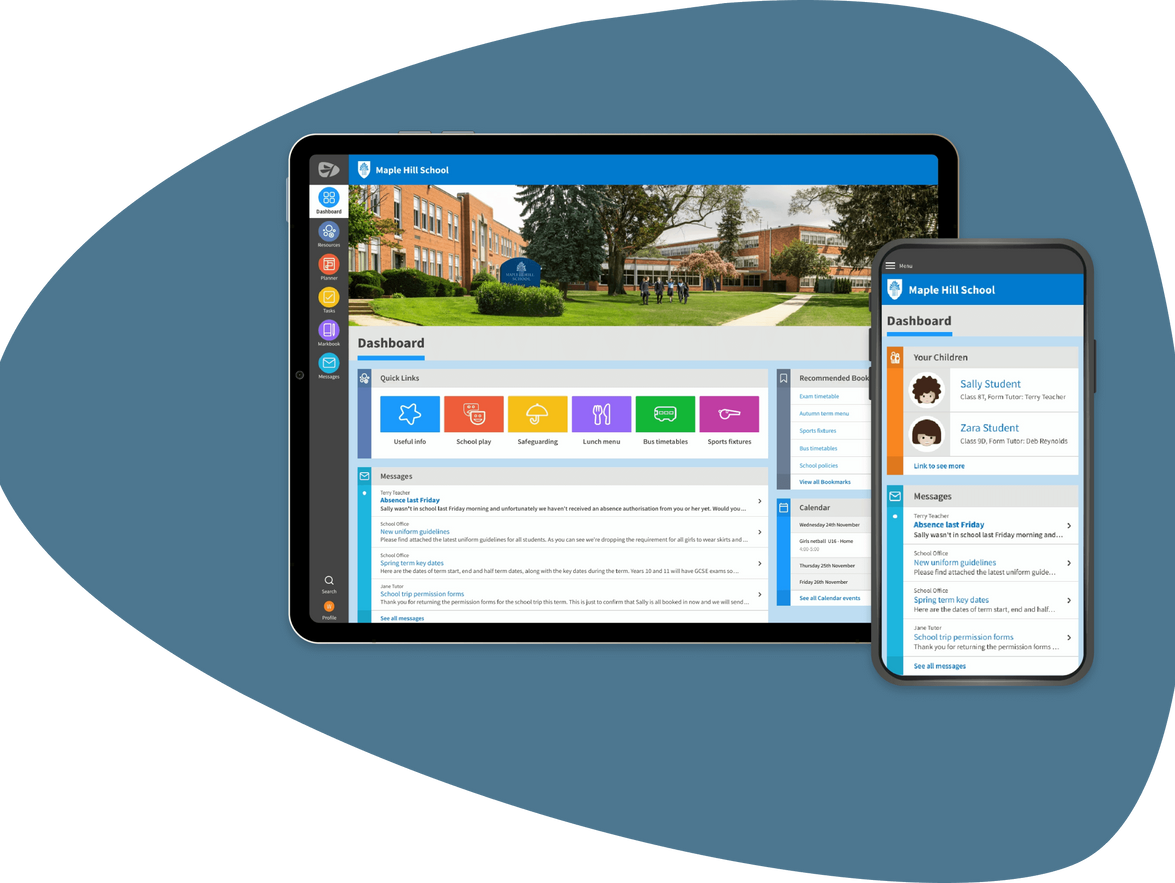What is a Virtual Learning Environment (VLE)?
A Virtual Learning Environment or VLE is a design space for teaching and learning.
For some, “virtual” conjures up an artificial world that replaces real life. But virtual learning environments neither replace classrooms nor existing educational practices. They enhance them. They add value as they extend the space of the physical learning environment. They provide opportunities to stretch the imaginations of teachers and students alike.

Technically speaking, virtual learning environments are designed spaces that resemble architecturally sophisticated buildings. Think of an ideal place of teaching and learning, one where the messy desk covered in coffee-stained assessments and the equally large pile of lesson plans all moves to your laptop. Teachers effortlessly move between assessment, feedback, sharing and monitoring without knocking over their coffee in the process. Students have their assessments returned swiftly -- unstained.
A virtual learning environment offers not only an elegantly designed space for teaching and learning, but a place where learners, teachers and students feel at ease. A good VLE allows users to co-construct their learning environments together over time. With all that goes into a physical classroom – the lesson plans, the homework, the conversations – why not make use of virtual learning environment software to organise, share and process it all?
History
Before our modern-day concept of technology, teachers and institutions began sending students lessons by post as early as 1840. With the dawn of television, The University of Houston offered its first televised college credit classes in 1953. In the 1960s, various electronic teaching machines allowed instructors to manage course content.

At the University of Illinois 1960, Dr. Donald Bitzer developed PLATO (Programmed Logic for Automated Teaching Operations), which offered a computer assisted instruction system. In 1969, US Department of Defense commissioned ARPANET (The Advanced Research Projects Agency Network), or the Internet as we know it.
On the heel of those innovations, students started taking computer-based courses at Stanford University as early as 1973. Over the next two decades, software developers invented instructional games, tutorials, drills and testing as well as the electronic whiteboard system.
In 1989, Tim-Berners Lee, a young British engineer proposed a document sharing system, or “web of notes with links.” He called it World Wide Web. Several courseware delivery systems or “Learning Management Systems” emerged throughout the next decade.
By 2010, almost all large institutions had adopted e-learning courseware. As social networking sites developed, virtual learning environments became more interactive, collaborative and conversational.
Evolution and the Future
An ancient Chinese proverb reminds us: “Tell me, I’ll forget. Show me, I’ll remember. Involve me, I’ll understand.”

Evolving VLEs embrace that ancient wisdom. They incorporate technologies that foster collaboration, interactivity and modelling for students, parents, school leaders and teachers. They strive to eliminate barriers in education and increase interactions between individual learners, their classmates and the content of the classroom. VLEs create motivating, self-learning experiences for students.
For example, when a class goes on a local trip to a museum or visits a foreign country, with the help of a VLE, students might keep online portfolios to document their experience and research. Teachers might provide a learning template with criteria that students can refer to.
It’s easy to see why VLEs have now become integral to online (or e-learning) in schools around the world. As the sophistication of technology develops, VLEs are leading the way in innovative education. They are changing the ways schools and classrooms operate. Moreover, students, teachers, school leaders and parents are turning into active participants who co-construct the virtual space of learning.
The Firefly Perspective
Where many VLEs primarily store and manage content, Firefly has been designed specifically around teaching and learning. In fact, Firefly is not a content management system; it’s an interactive, creative and dynamic learning tool.
The team behind Firefly knows teachers, students and parents juggle a lot. Everything on the Firefly platform has been designed to account for the lives of staff, parents and learners. Firefly allows teachers to annotate student work directly online, plan lessons online and edit those lesson plans via a web interface. Firefly is compatible with handheld devices, which makes it easy for students and teachers to keep in touch with course work and each other.
Teachers want to focus on what they do best -- teaching. Students want to learn in ways that integrate their growing finesse for tech, their desire to go at their own pace and their inclinations to work either independently or in groups. Parents want to engage with their children’s learning , to keep in close communication with schools and teachers and to keep up-to-date with progress and development. School leaders need to develop and measure success.
Firefly makes all that possible.
Your questions answered
What is a virtual learning environment used for?
A VLE is a collection of software tools that support teaching and learning. The best virtual learning software accommodates recent innovation in learning technology. At a basic level, VLEs distribute information in the form documents, news and notices. They make available a wide range of electronic resources from notes through to video demonstrations, podcasts, hyperlinks and more. They allow communication through messaging systems, moderated forums and mailing lists. They offer a comfortable place for both formative and summative assessment. They manage the delivery of content across departments as well as handle registration and administration of marks.
What are the advantages of a virtual learning environment?
There are several advantages to a virtual learning environment. Firstly, they offer a streamlined place where the diverse activities of staff, students and teachers can be managed with ease. Secondly, they help with class administration and organisation; they assist in the creation of lesson plans; they manage the assessment and monitoring of students; and they aid discussion with and support for students. Finally, VLEs allow students to easily access homework and assignments as well as work at their own pace in and out of the classroom. As students, teachers and school leaders embrace virtual learning environments, the possibilities look endless.
Is a virtual learning environment simply a 3D or virtual reality technology that replaces a classroom?
No, a virtual learning environment is much more than that. A VLE does not replace a classroom; it enhances it.
